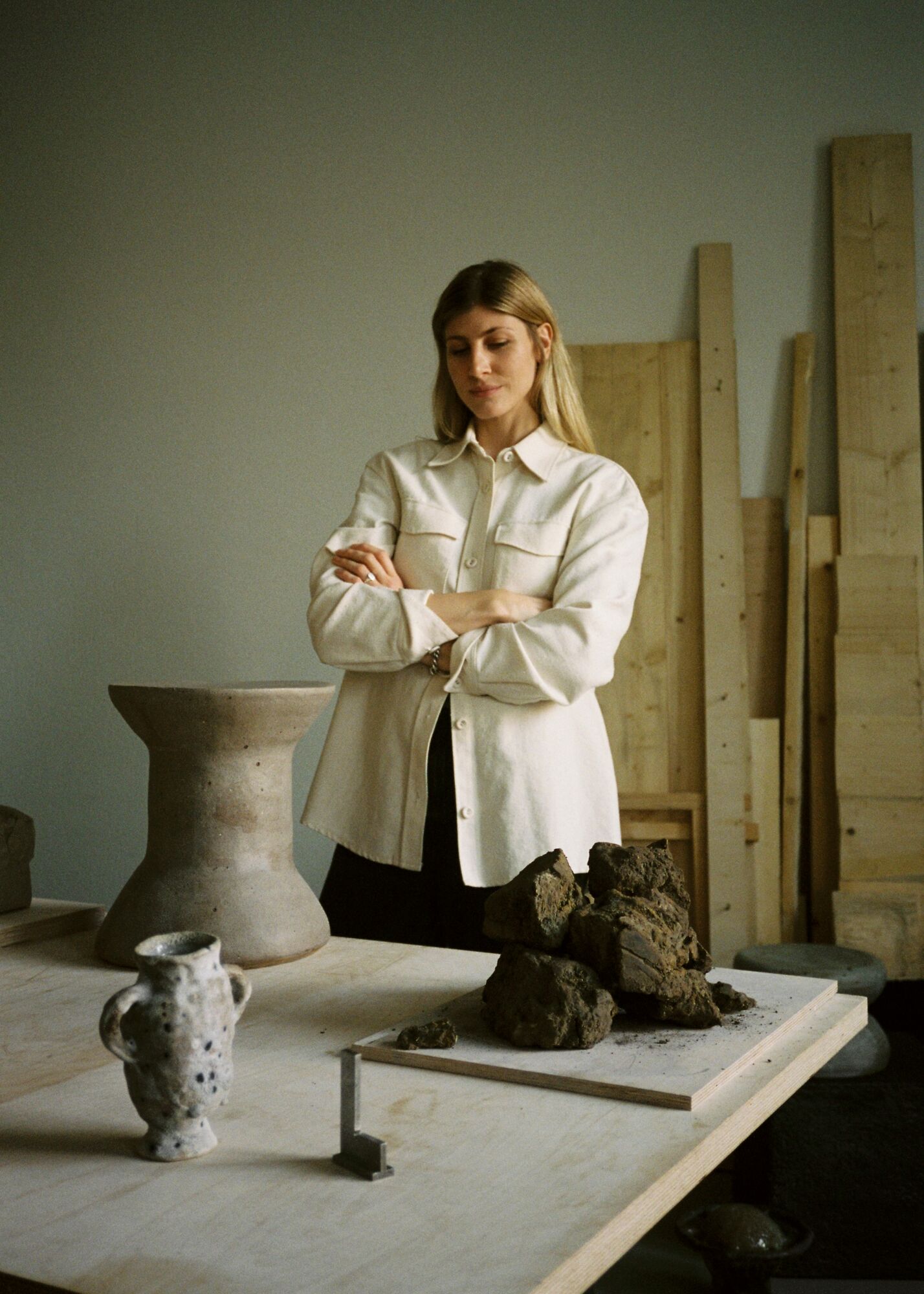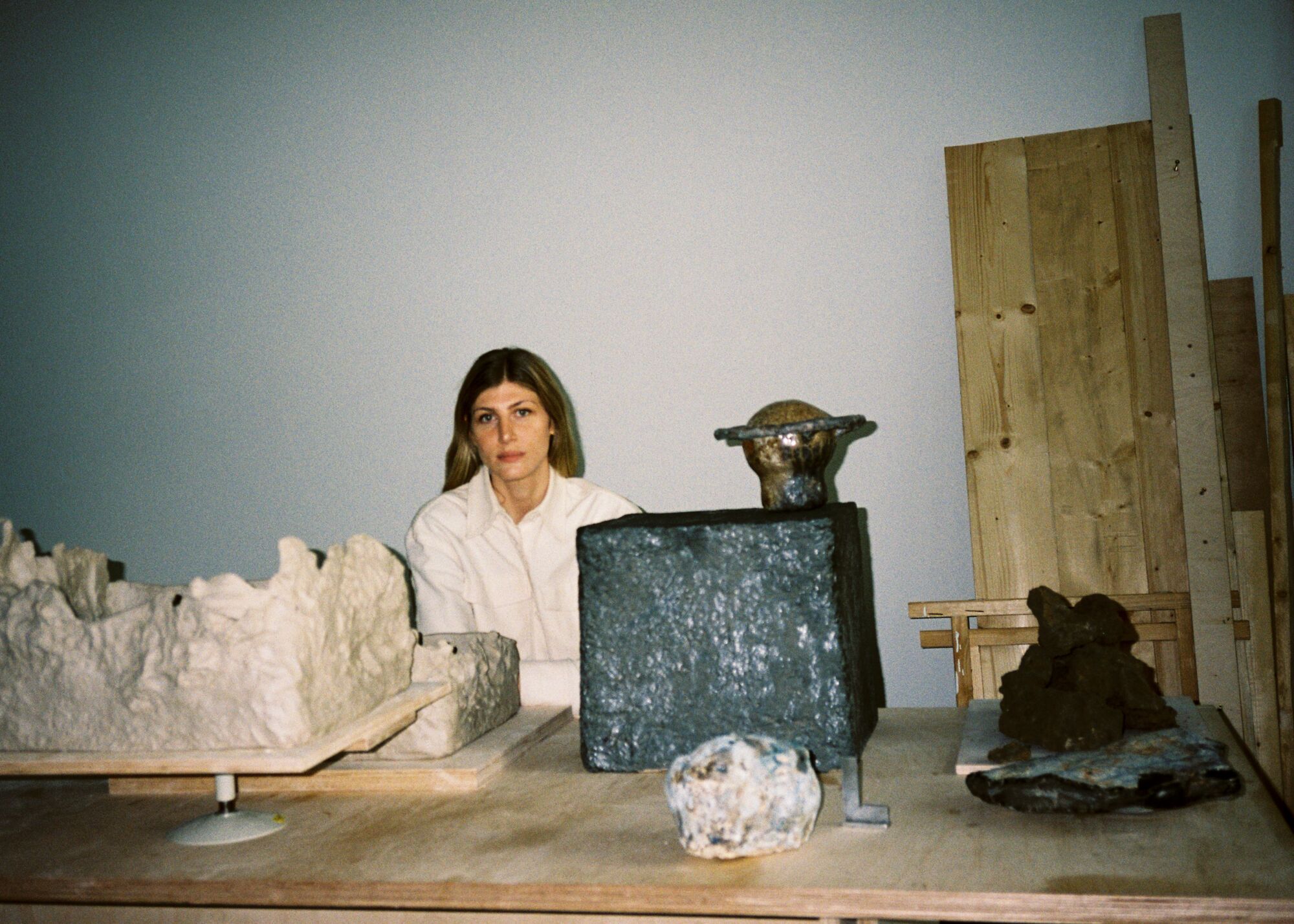Samantha Albert
Samantha Albert is a ceramic artist based in Berlin, one of the rare kinds whose history is written all over her work.
Her journey with clay began on the west coast of Sweden where granite boulders dot the seaside and an expansive vein of blue clay runs underground. From the moment she dug out her first lump she immediately felt a strong connection with the material. As she describes it, working with clay is grounding, yet exhilarating—a sensation that’s difficult to put into words. Though she works in many mediums, these deep and complex emotions are what draw her to clay over and over again.
In her works, Samantha recreates a sense of familiarity by alluding to things that make her feel comfortable, that she wants to engage with. Though the forms she works with are modest, the processes she engages with are often a complex journey of material processes. It was these processes that interested her from the start, when she first witnessed the changing properties of clay when exposed to the fire. That inspired her to delve further into what she calls “a true alchemy”.
One is immediately taken by the creative energy that fills her studio. It is a hub of activity amid a collection of geological samples. From the kiln in the corner to the halffinished sculptures and buckets of ground limestone, mica, sand, and clay that she has collected from various parts of Europe, her studio is clearly her sanctuary.



You can often find Samantha in the Neues Museum in Berlin which is one of her places of comfort and inspiration, a place where she feels at home. She also loves weird, small archeological museums in the middle of nowhere like the Temple of Artemis east of Athens. It is places like this that remind her that even the most sacred things that people devote their life to and worship can turn into ruins one day.
All in all, she wants us to consider her ceramics the way they are: some will be loved, some will be protected, and maybe some will even be broken.

Thus, when observing Samantha’s work, you are immediately intrigued by this very special and undeniable sensation of familiarity and simplicity of silhouettes and textures. There is something so warm and reminiscent of the past times in these objects that draws you towards them. If there was some correlation between Samantha and her work, you could say that, much like her work, the closer you get to her, the stronger this power revelation of the finite and unadulterated beauty gets.
Her objects are challenging the concept of functional wear leaving behind questions like “Is it functional?” and “If so, what is its function?” and give completely new purpose to the objects. Samantha’s ceramics are not created for the sake of their functionality alone, but to make you feel in a certain way. Pushing beyond the idea that ceramics are simply commercial objects, she is making something you can establish a real connection with. Perhaps this is because her objects connect us to the past, her objects connect us to the present, and her objects connect us to the Earth.



What makes her truly special though is that she values the Earth and those before her who studied it and worked with it. From Greek goddesses to Italian cheese makers, she finds inspiration everywhere and incorporates their craft into her work. Her master thesis “The Shape of a Void (and its Surface)” written at the Oslo National Academy of the Arts, is a testament to her connection to both contemporary surroundings and to human history and geological processes. An intuitive and active artist, Samantha is not afraid to take risks and produce what feels right in the moment.
Even though in pottery we are often struck by big impressive shapes and vessels, Samantha — although very capable of working at scale — spends most of her efforts thinking about how to recreate the same impact with much smaller and refined shapes. Having enjoyed being in close proximity while she works, it's blissfully obvious that Samantha is not someone who feels the need to tell her story; instead, she lets her hands translate it in a language on its own.
Samantha Albert is a gem and the humblest of its kind.





